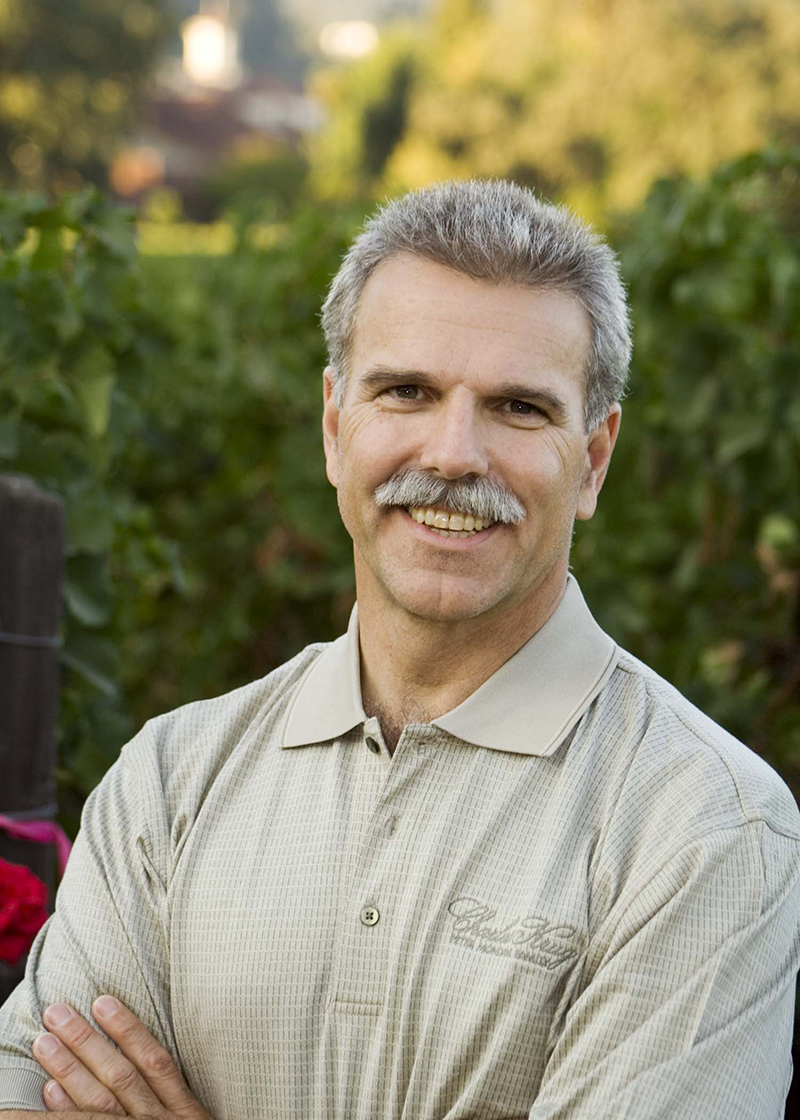

Peter Mondavi Jr., Photo Credit: Charles Krug Winery
There is perhaps no family name more synonymous with Napa Valley wine than Mondavi, so oenophiles were buzzing with excitement when Peter Mondavi Jr. took to the stage at this year’s Austin Food & Wine Festival.
When Peter Mondavi Sr. passed away at the age of 101 last winter, his sons Peter Jr. and Marc took over operations of Napa Valley’s oldest vineyard, Charles Krug Winery. Established in 1861 by Charles Krug, who began making wine using a cider press, the (then-inactive) winery was purchased in 1943 by Cesare and Rosa Mondavi after they immigrated to the U.S. from Italy and fell in love with the grapes of California.
Seventy-four years later, the Mondavi family welcomes members of the fourth generation into the business, carrying on a strong tradition of bordeaux varietals with a focus on its widely respected cabernet sauvignon.
After a decade-long, $25.6 million vineyard improvement program, Charles Krug hired winemaker Stacy Clark, who brings more than 25 years of Napa Valley winemaking experience with her, and a dedication to sustainability. And most recently, the winery installed more than 4,000 solar panels, generating up to 1,000 kilowatts of power per hour. The brand also partnered with the Culinary Institute of America to provide students with hands-on farming experience using its land.
Peter Mondavi Jr. chatted with us at the Austin Food & Wine Festival after he led a tasting of Charles Krug wines that exemplified time-honored traditions while proving that even the most iconic brands should never stop innovating.
Has much has changed at the winery since you’ve taken over as head of operations?
I wouldn’t say it’s differed that much. My first job at the winery, in the summer just doing odd jobs, was when I was eight years old, so I’ve been working with dad, under dad, around dad for a long, long time. So I think we share a lot of the same philosophy styles.
How would you describe your winemaking style?
I think if you were to encapsulate our style, we love to have wines that truly reflect the terroir, where they’re grown, and also the varietal.
And we are balanced in our winemaking techniques, meaning things that affect the flavor — barrels, malolactic fermentation. So we want to preserve the varietal characteristics and enhance that with modest, balanced amounts of oak.
We like to keep a lot of the natural acidity because that makes a great pairing with food. That’s been dad’s mantra and we’ve carried that on. And Stacy’s whole career has been stylistically similar to that and that’s why she’s joined us.

Peter Mondavi Jr., Photo Credit: Charles Krug Winery
How has Napa’s wine industry evolved throughout your career?
When I was growing up as a little kid, Napa Valley was a very rural, agricultural business. It wasn’t until the mid-to-late ’60s that wine grapes became the No. 1 dollar value agricultural product in Napa Valley. Before that I think it was beef.
Today, I think I saw a report that $740 million comes from grapes and a few hundred thousand dollars from other agricultural stuff. So now grapes dominate it, but when we were growing up there, were maybe a dozen wineries or less.
Fine dining did not exist. And then, in the late ’60s and ’70s, things started to evolve at a fairly rapid rate. Now there’s about 470 physical brick-and-mortar wineries and well over 500 brands. Napa Valley is up there with the greatest wine regions in the world. It’s just enormous, both the food and wine scene there.
What are your favorite destinations for wine travel?
When we do get away, it’s Italy. And no matter where we go, we always seek out and enjoy the lesser-known, highly local wine — the wines we’d never find over here.
And even if we like one wine, we don’t necessarily go back to it all the time. We always want to try new ones. And they’re not always the most expensive wines. When you go to Italy, you can get a pretty nice bottle for a reasonable price, but you need to defer to the locals to guide you.
Any favorite regions in Italy?
Well, who doesn’t love Tuscany? That’s a beautiful [region] right there for wines.
And most recently, my wife, Katie, and I went back to Sardinia and their wines have improved dramatically. We actually honeymooned there and the wines, back then, were a little questionable.
But today, we love the bright, fresh whites that they have — little lighter in character and very, very refreshing.
